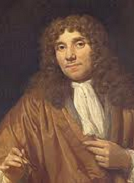Influence of Delft
Scientist's of Delft

Anthonie van Leeuwenhoek
First of all, in 1674 Antoni van Leeuwenhoek looked through his microscope and discovered a totally unknown world, the world of microorganisms. These became known due to his correspondence with the Royal Society in London.

Martinus Willem Beijerinck
At the end of the 19th century, came Martinus Willem Beijerinck. He was the first Professor of Microbiology in Delft and he is –not for nothing- seen as the founding father of the Delft School of Microbiology. He was the first person who used the term “virus” for the invisible disease causing material that he had shown to be self-replicating on tobacco leaves –TMV. Beside this, he originated the selective culture technique (now known as enrichment culturing, which is still used!) and was the first to isolate a wide range of microorganisms.

Gerrit van Iterson
Gerrit van Iterson jr. was one of Beijerink’s pupils and is the third of our bioscientists. He was the Professor of Microscopical Anatomy, heading the Department of Applied Botany, which included a lot of work on tropical products such as rubber and tea. Furthermore van Iterson is known due to the fact that he was fascinated by the mathematics underlying plant organisation and development; he was a bio-mathematician

Albert Jan Kluyver
Last, but certainly not least, Albert Jan Kluyver. Kluyver was the second Professor of Microbiology at Delft, and a pupil of van Iterson. Among Kluyver's achievements was his work on Unity in Biochemistry. In this work he described that biochemical pathways are essentially similar, no matter what sort of organism they are in. Beside this he showed that it would be wise to combine biochemical and morphological features for the identification of microorganisms. Further he also showed that one can get reproducible results with fungi by using submerged cultures rather than allowing them to develop on the surface of media
The Museum
Our laboratory houses an extended collection of papers and artefacts from these last three microbiologists. Our own Biological Safety Officer, Dr. L.A. (Lesley) Robertson has –besides her responsibility for safety in our building- spent many, hours on this collection and she is the Curator of the Delft School of Microbiology Archives.
One room is maintained as a small museum for visitors to see. This includes the desk and chair used by Professors Beijerinck and Kluyver, a clock from Beijerink’s private laboratory, Kluyver’s photo collections and the plant models from the van Iterson collection. Most of the work on maintaining the archives is done by volunteers, without their help, finding this information wouldn not have been possible.
The second room is a climate-controlled archival storage area. The most important items in the collection are the papers of the three Professors, including their laboratory journals. Furthermore there is a wonderful painting collection and, for example,. a substantial collection of glass negatives. We, as the whole team, would recommend you to visit this remarkable collection when visiting Delft. You would need to contact Dr. L.A. Robertson to ask for an appointment to be sure she has time to guide you.

Historical Newsflash
Below a historical, self-made newsflash about three of the four scientists mentioned above. In between there are some fragments of the museum of the TUDelft. We would like to thank Dennis Rütze for making this movie together with us.
 "
"
















